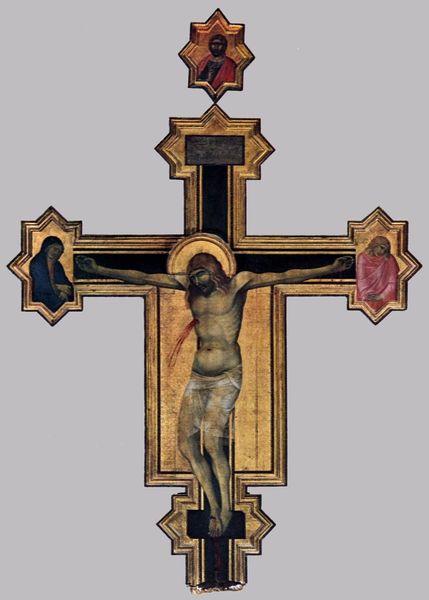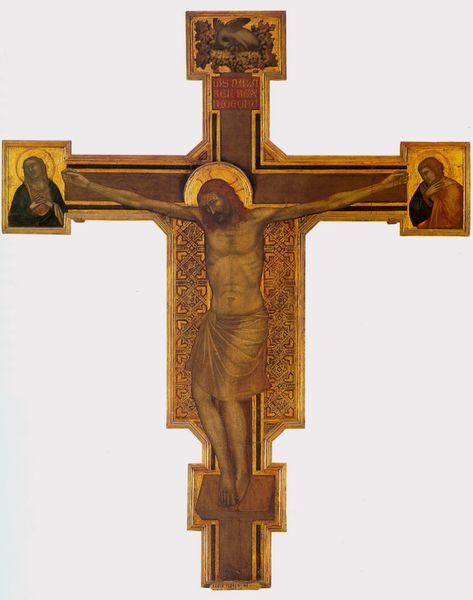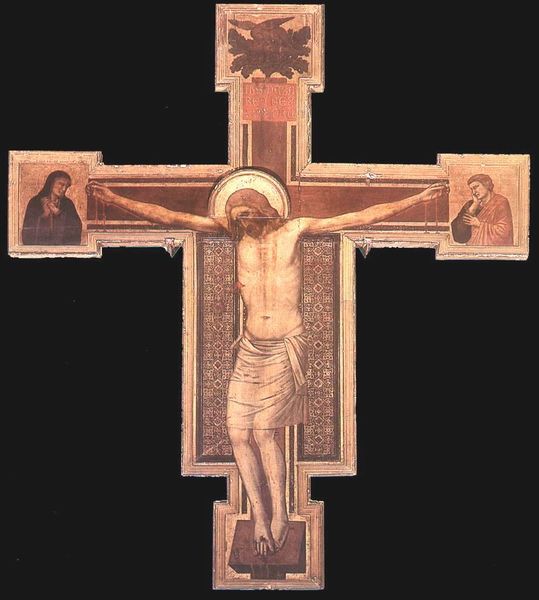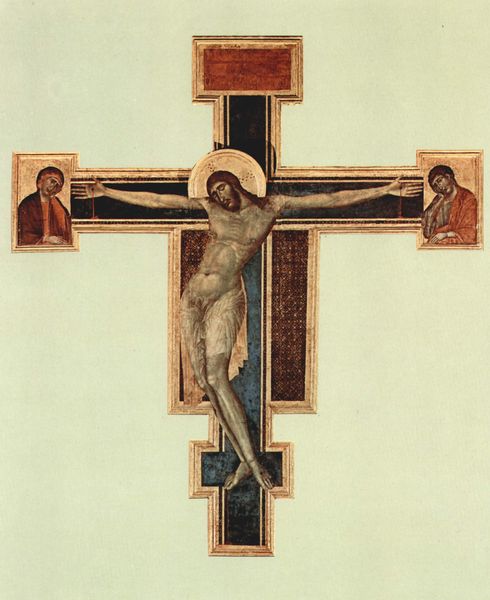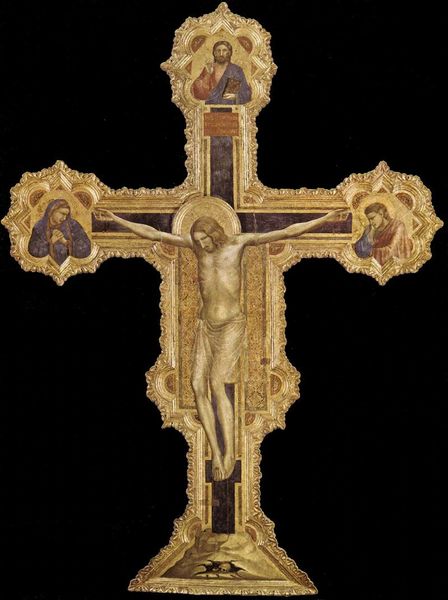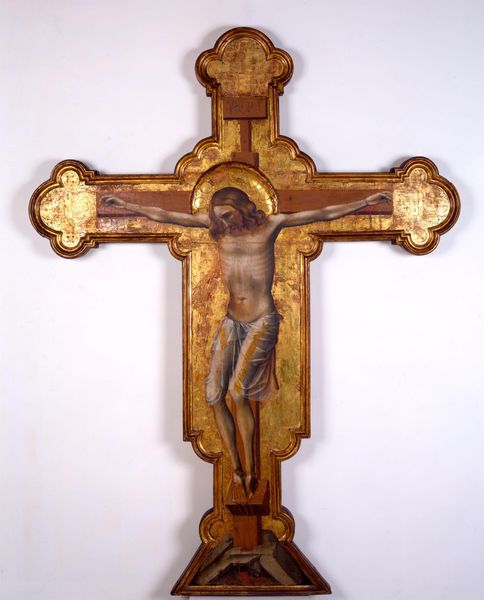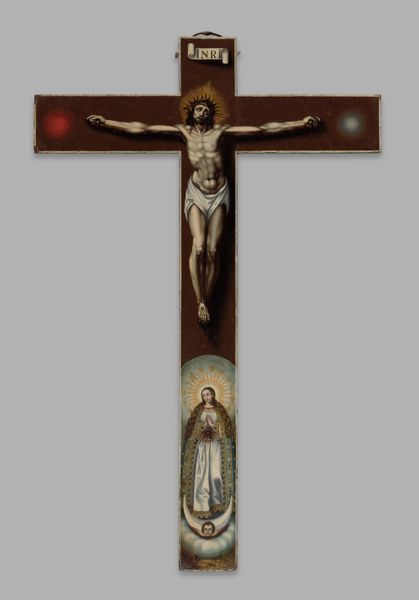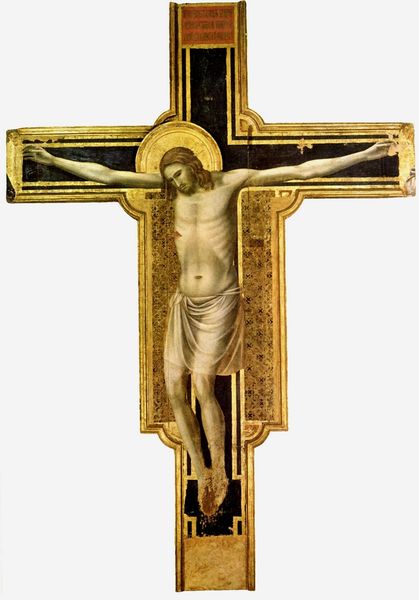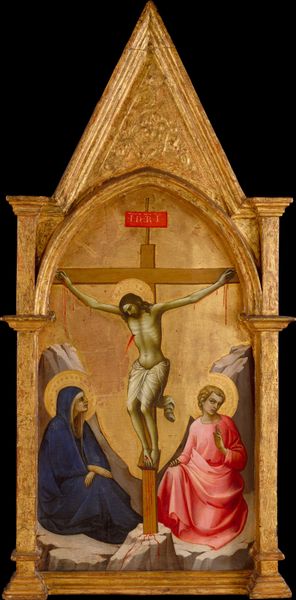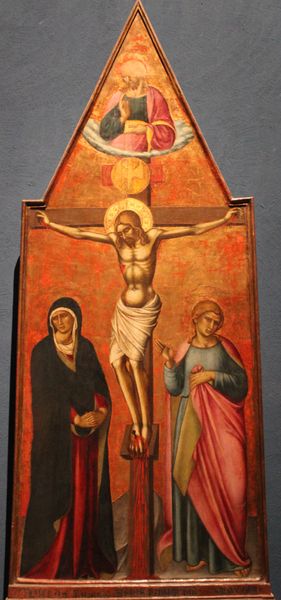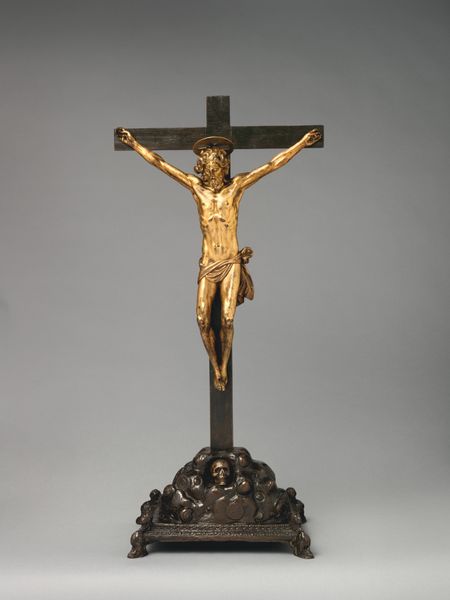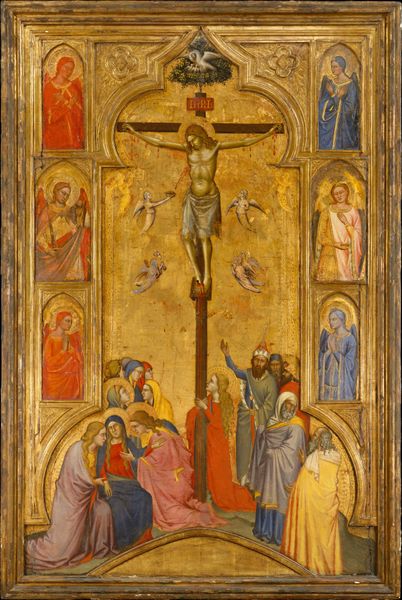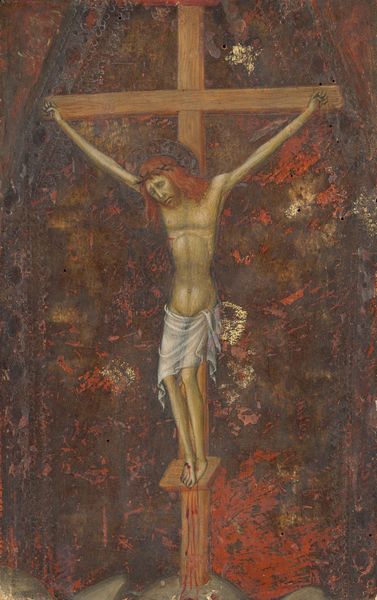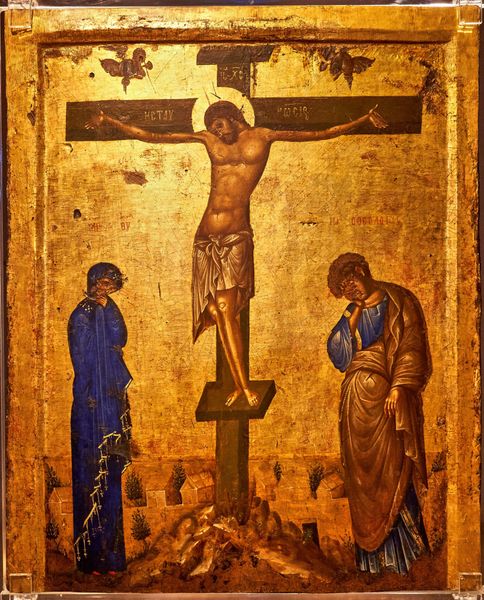
tempera, painting, fresco
#
medieval
#
narrative-art
#
tempera
#
painting
#
sculpture
#
gothic
#
figuration
#
fresco
#
jesus-christ
#
cross
#
christianity
#
crucifixion
#
history-painting
#
early-renaissance
Dimensions: 578 x 406 cm
Copyright: Public domain
Curator: Here we have Giotto’s “The Crucifixion” from around 1312, located in Santa Maria Novella, Florence. It’s tempera on panel. Editor: It’s… arresting. The somber tones, the gaunt figure of Christ—it's stark and visceral, pulling no punches about the suffering involved. There's also something really raw about how the gold halo sharply contrasts with his sickly complexion. Curator: That raw emotion is so central to Giotto's break from the more stylized depictions of the era. The artist offers a heightened sense of realism, even as he retains established symbols of divine suffering. We can consider this within the larger context of early Renaissance changes to devotional imagery. Editor: Exactly. Looking at it through a modern lens, I'm struck by how this panel forces the viewer to confront violence and oppression. It invites contemplation on power structures of the time and how those informed cultural views and values related to religious imagery, sacrifice, and even political authority. Curator: Certainly, there are multiple perspectives from which one can examine this art. The symbolic content here builds over centuries, through cultural memory and its continuous updating. Note, for example, how Giotto situates smaller depictions of grieving figures to each side. They have conventional meaning, of course, yet their humanity is made poignant by how near we find them to the divine made utterly flesh. Editor: And by doing so, Giotto isn't just illustrating a biblical event. The artist stages an intersection between human suffering and religious doctrine, challenging us to think about how sacrifice and redemption impact different peoples, throughout history, and still today. What were Giotto’s patrons thinking as this blend of traditions, emotion, and realpolitik materialized before their eyes? Curator: I wonder about that very point, the personal element within this shared scene. Its lasting power lies in this ambiguity between inner experience and collective identity. Editor: Agreed. This work continues to engage across temporal and ideological divides, demanding that each of us examines our beliefs about sacrifice, about history, about power, about art itself.
Comments
No comments
Be the first to comment and join the conversation on the ultimate creative platform.
